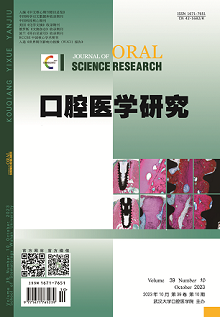|
|
Research Progress of Metal Ion Doped Silicocarnotite Bioceramics in Field of Bone Repair
LI Xinrui, MENG Weiyan
2023, 39(10):
871-874.
DOI: 10.13701/j.cnki.kqyxyj.2023.10.004
Oral hard tissue defects caused by periodontal diseases, tumors, trauma, and congenital malformations bring great difficulties to the reconstruction of oral function. Silicocarnotite [Ca5(PO4)2SiO4,CPS] bioceramics have become the research hotspot of new generation of bone defects restoration materials due to their good biocompatibility, degradability, osteoconductivity, and bone conductivity. Natural human mineralized tissues contain various metal ions such as Cu2+, Fe3+, Zn2+, Mg2+, Sr2+, etc, which have their unique biological properties, and the incorporation of these metal ions into silicocarnotite has great potential for material modification. This paper outlines the current investigations of silicocarnotite bioceramics, focusing on the effects of ion doping on the physicochemical properties of bioceramics, the role of metal ions in antibiosis and promoting osteogenesis and neoangiogenesis, and their possible mechanisms, and provides an outlook on the future development of silicocarnotite-based materials.
References |
Related Articles |
Metrics
|

